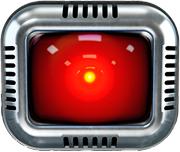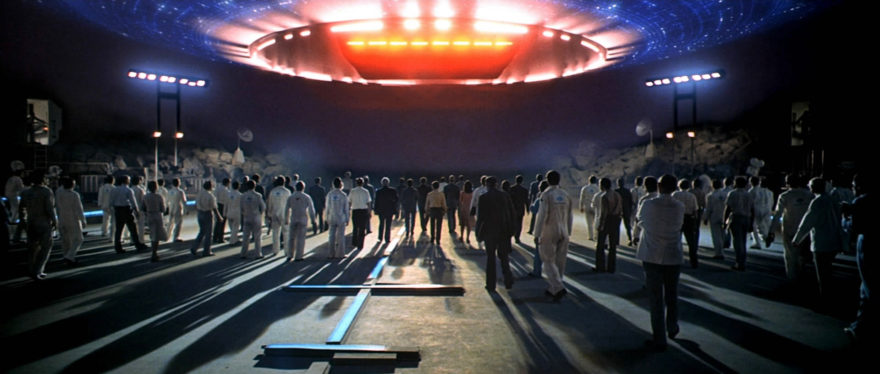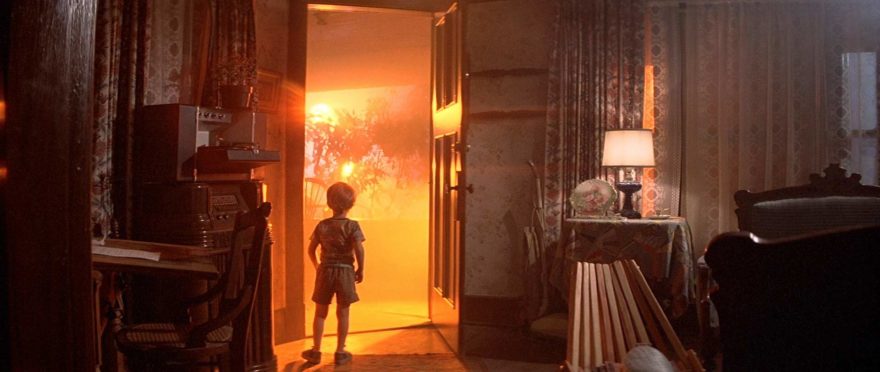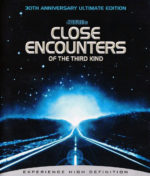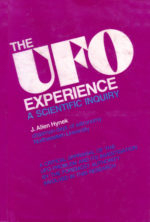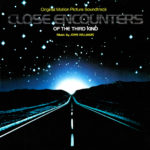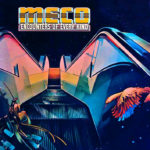A special effects film filled with wonder, adventure and drama, Close Encounters of the Third Kind embraces the idea of accepting and exploring the unknown. The title promises ‘contact with aliens’ and the film delivers spectacularly—after a rollercoaster trip through government conspiracies, alien abductions, and a series of mysterious and visually stunning extraterrestrial encounters.
The film intertwines an epic tale of Earth’s first official alien contact with the personal stories of individuals caught up in this mammoth event. One man has a harrowing, up-close encounter with an alien spacecraft that hovers above his pickup truck. A strange image is plays in his mind after the event and he alienates his friends and family trying to understand it—eventually building a giant sculpture of the image in his living room. In another story—with one of the most gripping alien abductions ever put to film—a mother awakes to a house filled with blinding lights and possessed electronic devices as unseen visitors lure her young son into their clutches.
Director Steven Spielberg is at his directorial best in this film, which he shot right after his blockbuster film Jaws. Working with composer John Williams, he melded colorful visuals with a tonal musical language. Williams recalls, “one of the ideas of the film was that maybe we could communicate with the aliens using a kind of a musical Morse code, a communication by sound and color—and a synchronized effect of the two.” Williams’ score for Close Encounters was hugely popular (even spawning a disco single by Meco) and, ironically, when the score was nominated for an Oscar, John Williams lost to himself for his score to Star Wars.
While they were filming, no one knew what the spaceships were actually going to look like, so the actors had to look up into blank space and imagine awesome UFOs. One night, while trying to come up with ideas for the special effects, Spielberg watched the planes above the Los Angeles airport. As they approached the runway with brilliant landing lights, he could barely see the body of the plane behind the glare—this became the inspiration for the look of the film’s spaceships, an abstract ship behind a colorful array of lights.
The film’s finale required an enormous building to house the set and it was filmed in a giant blimp hangar in Mobile, Alabama. At 300 feet by 300 feet it was still not big enough, so they extended the set out the back of the building and covered it with black fabric so they could shoot during the day. To light this set, the production shipped nearly all of the arc lights in Hollywood to Alabama—about 80 of them.
Close Encounters was Columbia Pictures most successful film ever when it was released. Due to its immense popularity, in the days before home video rentals, it was re-released in theaters with bonus footage that was shot specially for the Special Edition—but avoid this as even Steven Spielberg regrets this version. In 1998 a Collector’s Edition was released which captures the best of all versions. Close Encounters has been included for preservation in the National Film Registry, and it is hard to believe it was released the same year as the original Star Wars; it was part of a wave of late 70s science fiction films that reinvigorated the science fiction genre and produced many amazing films.
Enjoying the site? If so consider supporting it with alien-infused caffeine…
